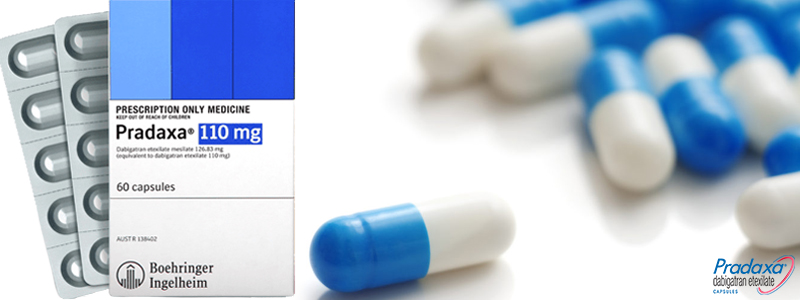Written by Emre Ertugrul
Blood clotting can be a real scourge for thousands of Americans – but when they intend to get relief, some drugs might turn out to be the real scourge, and the injured may not even realize that they had an avenue for redress.
After its release on the market in 2010, a blood thinner produced by German drug giant Boehringer Ingelheim Inc. has quickly become a blockbuster product. Then people started experiencing harsh complications while hoping to have better recovery periods.
Since then, Pradaxa®, also called dabigatran, has been associated with hundreds of deaths and thousands of side effects in terms of brain bleeding, gastrointestinal bleeding and heart attack, which led to a tough courtroom fight for patients in over 4,000 lawsuits.
Betty Knight, an 84-year-old woman, was one of the victims of the scourge. She died of severe bleeding after using Pradaxa®. A federal jury found on Oct. 19 that the company was not clear about the risks of its product and awarded $1.25 million to Knight’s family.
Attorney Neal Moskow, who is working with Johnston Law Group and a counsel to the family, told SafetyWatch that he expects future trials to demonstrate the negligence of the company.
“That has been shown time and time again in the mass tort litigations where we see internal documents indicating that companies know that they can make their product safer, but choose not to do so,” he said.
Internal scientist for the drug maker believed that they could make the drug safer by doing blood testing and adjusting the dose or changing the therapy altogether for people who were getting too much drug, according to Moskow. “And to this very day, they claim such blood testing is not necessary.”
Back in the day, Pradaxa’s marketing strategy had a very unusual appeal for patients and physicians – unlike warfarin, an older anticoagulant, the new drug on the market did not require frequent blood testing and a strict diet, as highlighted in advertisements. The off-label marketing strategy for the drug maker was the main reason for settlements in the lawsuits.
Not long after the increasing number of bleeding to death events, Boehringer Ingelheim faced patients who seek justice in the courtroom across the country. In May 2014, the company announced that they agreed to pay $650 million settlement for Pradaxa lawsuits.
In December 2017, a settlement decision of $13.5 million was made regarding the drug maker’s misleading representations in marketing its four prescription drugs: Micardis®, Aggrenox®, Atrovent®, and Combivent®.

At all four trials to date involving Pradaxa®, there have been documents that have come into evidence that said blood testing would put the company at a “competitive disadvantage,” Moskow said. “Eliquis® and Xarelto® [other prominent blood thinners on the market] don’t require testing so Pradaxa® can’t require testing – and words to that fact.”
Moskow also added that the “competitive disadvantage” language is something that they keep reiterating to juries that the company has used that language.
Prescribed to nearly 850,000 patients in the U.S., Pradaxa® had to undergo two tests at the very beginning. RE-COVER I and RE-LY tests compared the safety of Pradaxa® to warfarin and questioned the effectiveness compared to warfarin at reducing the risk of stroke among patients with atrial fibrillation. The results showed that Pradaxa® was successful in preventing blood clots as effectively as warfarin and had fewer side effects.
“Because of the information the company collected during its testing, they have actual knowledge of patients at greatest risk of bleeding and how to prevent it,” said Moskow. “They have chosen not to share that information to maximize profit at the expense of patient safety.”
The FDA determined that the higher dose was better based on the analysis that Boehringer Ingelheim provided; however, the internal analysis suggested that it is not true, Moskow added.
Both Xarelto® and Pradaxa® labels indicate that the drug may cause serious or sometimes fatal bleeding, meaning that the company would not be considered liable after a patient died of serious bleeding because it is stated in the label.
But what the plaintiff attorneys had found before the verdict in October is that the company actually knows that there are ways to minimize the risk of bleeding, and they know who are more at risk of bleeding and others.
Compared to Xarelto®, the company collected a lot of data during their clinical trials that they know how much for Pradaxa® is too much and it was not revealed, Moskow said. “So, unless an attorney told you that you had a claim, you would never know that you have one.”
In 2011, Pradaxa® was the most reported drug associated with death or injury, stated by the Institute for Safe Medication Practices.
The institute published a report in 2014 about how the high risk of bleeding in older patients could be reduced with two options: A lower dose and a new monitoring test. Because the FDA had approved a higher dose and disallowed the new laboratory monitoring, the risks were still at the higher stakes.
Critics claim that blood thinners are one of the few products where the therapeutic dose is the dose that can potentially be fatal.
“It’s a very unusual product,” said Moskow. “If you take too much antibiotic, you might have diarrhea but you’re not going to die. But if you get too much of an anticoagulant, you can bleed to death from an internal source that you know nothing about.”
A safety announcement made by the FDA in 2014, a follow-up to the previous issue of 2012, addressed the lower risk of clot-related strokes, bleeding in the brain and death for Pradaxa®, along with an increased risk of major gastrointestinal bleeding as compared to warfarin. However, the lack of an antidote was not mentioned in the report.
In October 2015, Praxbind, an antidote to uncontrollable bleeding was approved.
There are nearly 3,000 Pradaxa® lawsuits pending in the U.S. and Moskow said he thinks they have simplified the case. They showed the jury fewer documents, they went into them in more depth and therefore had their experts focus on those specific issues.
“It’s a good example of how, you know, you do things more than once, but you figure out the better way to do it,” he said.
Boehringer Ingelheim announced in a statement that it would appeal to the U.S. Court of Appeals following the plaintiff’s verdict in October. Just as the company did, the plaintiff’s lawyers have appealed the first Pradaxa® case and the Connecticut Supreme Court is taking the appeal directly, Moskow said.
When asked about the significance of Pradaxa® lawsuits compared to other mass tort litigations, Moskow told that the Pradaxa® and Xarelto® litigations are aimed at changing the way these drugs are marketed.
“I truly believe that plaintiff lawyers in Xarelto® and Pradaxa® cases are serving public health by trying to make these drugs safer,” he said.

Emre Ertugrul
Emre Ertugrul is a reporter for Safetywatch.org, covering controversial drugs and medical devices, reporting on health policy and the FDA. He studied journalism with concentration in investigative reporting at Boston University. Previous experience with the New England Center for Investigative Reporting include tax issues, racial profiling and criminal justice. He also worked as an international news intern at Milliyet Newspaper and is currently one of the editors for Gazet.com.

Get a Free Case Review
If you are one of the thousands of people who have experienced uncontrollable bleeding after taking Pradaxa®, you may be eligible to receive a compensation for your injuries.


